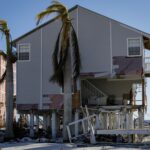At the same time, A.M. Best is also holding over its stable outlook on the personal lines segment of the U.S. P/C industry.
According to the Best’s briefing, titled, “Commercial Lines Outlook Remains Negative as Margins Remain Under Pressure; Personal Lines Remains Stable,” the negative outlook on the commercial lines sector largely reflects the same concerns that have been prevalent in recent years: moderation and declines in commercial lines pricing, the potential for adverse loss reserve development and low investment yields.
A.M. Best believes core accident-year margins for commercial lines will continue to be pressured as rate increases moderate, and in some lines, actually decline. A material line in this sector, commercial automobile, is expected to continue experiencing rate increases in 2016 amid a positive accident-year trend; however, adverse development in the line has wiped away any benefit recognized from these increases, A.M. Best said.
Commercial lines insurers’ balance sheets and the levels of capitalization maintained by many insurers remain strong even after giving consideration to moderately underfunded reserves. As a result, according to the rating analysts, the vast majority of rating actions will be affirmations. However, insurers that “lack the underwriting culture to produce sustainable, favorable earnings as the downward part of the cycle continues” will be susceptible to downgrades, they warned.
In the personal lines sector, the A.M. Best brief said company-specific issues as opposed to overarching market trends will likely drive rating actions.
The year-over-year consistency of the automobile line, which composes the majority of premiums in the segment, continues to drive earnings. According to the brief, pricing sophistication reflective of investments made by market leaders in multivariate pricing models has enabled insurers to analyze large amounts of data, segment their books of business and quickly recognize trends.
Additionally, the analysts said catastrophic weather events in recent years have been at or lower than expected for the segment. A lack of large-scale catastrophic events, such as hurricanes or earthquakes, has been a major reason. Property losses have resulted from smaller scale loss events, such as harsh winter weather and tornado/hail and thunderstorms. As a result, property results have contributed positively to the segment’s earnings.
While the strong capitalization of the personal lines segment is a positive and results have been consistent with limited volatility, insurers cannot rest, the analysts said. “Companies that have not actively invested in improving their pricing sophistication, efficiency and risk management are at a competitive disadvantage and will not be relevant in the long term,” they advised.
Source: A.M. Best




















 The Insurance Data Paradox: Structure Creates Flexibility
The Insurance Data Paradox: Structure Creates Flexibility  Travelers: Distracted Driving Incidents Continue to Rise
Travelers: Distracted Driving Incidents Continue to Rise  Time-Tested Loss Reserving Methods Challenged: AM Best
Time-Tested Loss Reserving Methods Challenged: AM Best  If U.S. Inflation Reflected Rising Home Insurance Costs, It’d Be Even Higher
If U.S. Inflation Reflected Rising Home Insurance Costs, It’d Be Even Higher 










Rating agency A.M. Best said it is maintaining its negative outlook on the commercial lines segment of the U.S. property/casualty (P/C) industry, despite relatively solid aggregate results over the past several years. The negative outlook indicates A.M. Best’s expectation of more downgrades than upgrades in the coming year.